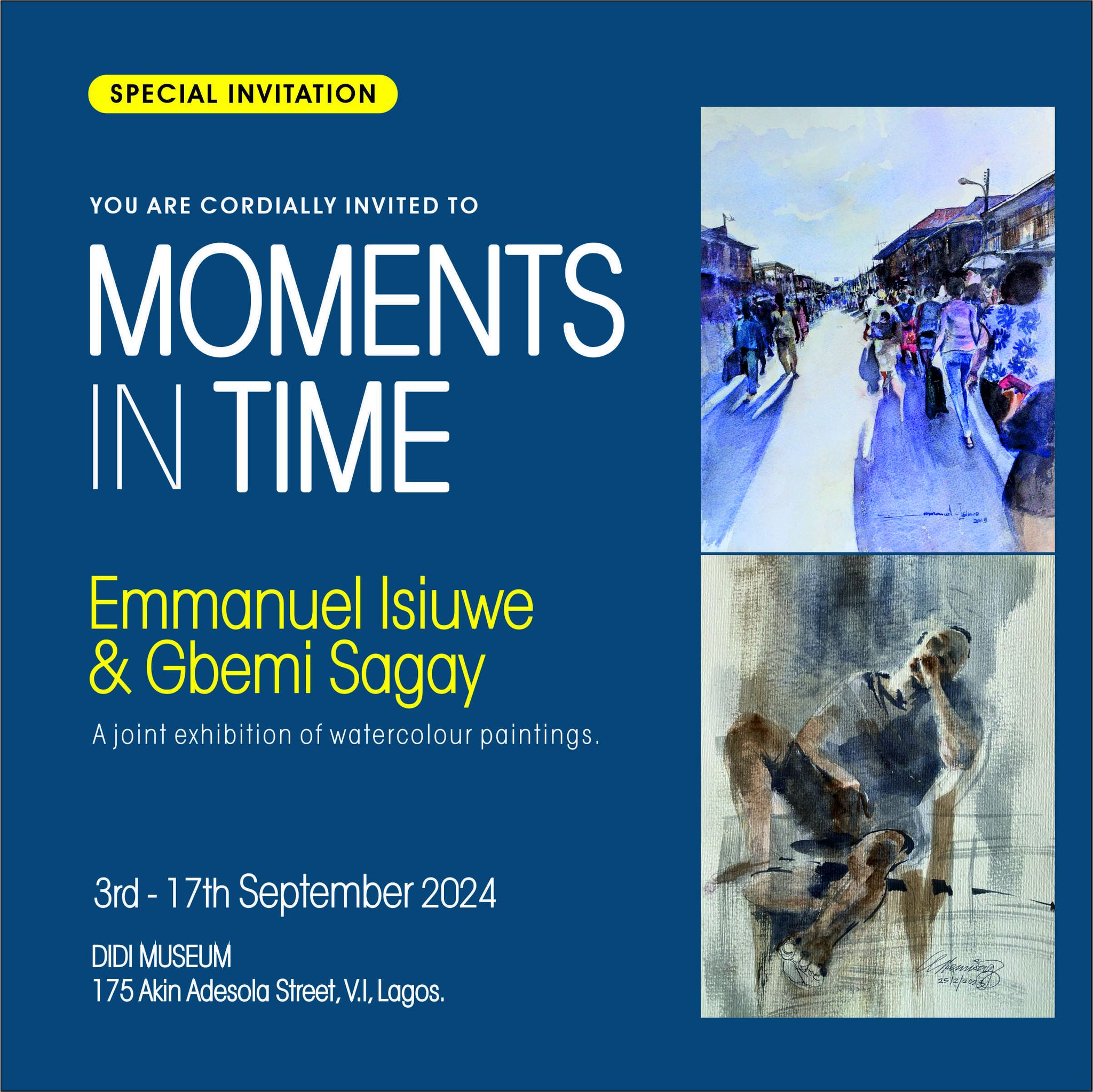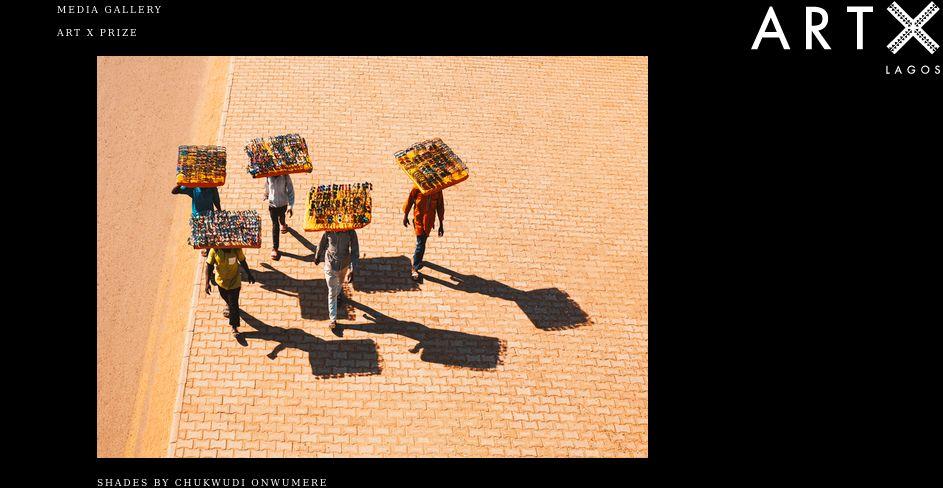Home > Art News
ÔÇťForeshortening is a faith, you just have to believe itÔÇŁ. - Prof Yusuf Grillo
"An analysis of Igbo drawing and painting reveals that space, line, pattern, brevity and spontaneity seem to be the pillars on which the whole tradition rests. It is these same qualities that I strive, both intuitively and intellectually, to assimilate in my work.". - Obiora Udechukwu.
ÔÇťYouÔÇÖve got to be a bit utopian to be an artist because it is not a very realistic occupation. The thought of being an artist in itself I think is a Utopian idea because I donÔÇÖt really make anything useful and I think that in of itself is an illustration of my disposition.ÔÇŁ. - Yinka Shonibare MBE
ÔÇťMy art is deeply, socially conscious, drawing from the artistic heritage of my people, the Benins in Nigeria, my experiences as a black man and African immigrant in New York and my profound desire to create. After having lived in Brooklyn for many years, IÔÇÖve come to recognize we all have common threads.
The direction of my sculpture over the years has been re-purposed materials as a way of giving voice to my personal convictions. In working with rope in particular, I noticed the polarizing nature of rope as a noose and its historical context. Rope remains an ugly symbol of the American past and yet it is highly accessible. I find it paradoxical that that something so simple and ordinary can have such power.
These materials have symbolic presence that engage the viewer, as do the many other materials that I use in my creations.ÔÇŁ. - Osaretub Ighile
ÔÇťI will not accept an inferior position in the art world. Nor have my art called African because I have not correctly and properly given expression to my reality. I have consistently fought against that kind of philosophy because it is bogus. European artists like Picasso, Braque and Vlaminck were influenced by African art. Everybody sees that and is not opposed to it. But when they see African artists who are influenced by their European training and technique, they expect that African to stick to their traditional forms even if he bends down to copying them.ÔÇŁ
I do not copy traditional art. I like what I see in the works of people like Giacometti but I do not copy them. I knew Giacometti personally in England, you know. I knew he was influenced by African sculptures. But I would not be influenced by Giacometti, because he was influenced by my ancestors.ÔÇŁ. - Ben Enwonwu
ÔÇťIf there is anything like contemporary African art, it is those creations that are cognizant of this element of spontaneity and improvisation, which tends to work with, and draw from it the possibility of alternative forms and aesthetics. Therefore ÔÇťbeing AfricanÔÇŁ is to blur the lines between possible and impossible rendering the very state of ÔÇťbeingÔÇŁ indefinable.ÔÇŁ- Emeka Okereke
ÔÇťArt has no bounds. If you control it, it dissipates and is lost, ÔÇÖcause it wants to be free, it wants to flow and change and grow and reproduce like a living thing. Art lives and gives life. Without it we are just a bunch of wanderers without form, without purpose, without hope. Art is our definition and we cannot but embrace and live it.ÔÇŁ. - Segun Aiyesan
ÔÇťColor in itself has the possibility of mirroring the complexity of the world as much as it has the potential for being distinct. The organization and patterning in the paintings are of my own design. I continue to explore in the paintings a metaphoric ability to address the human condition through pattern, structure and design, as well as for its possibility to trigger memory. The colors I use are personal: they reflect the collection of visions from my travels locally and globally. This is also one of the hardest aspects of my work as I try to derive the colors intuitively, hand-mixing and coordinating them along the way. In my process, I cannot make a color twice ÔÇô it can only appear to be the same. This aspect is important to me as it highlights the specificity of differences that exist in the world of people and things.ÔÇŁ. - Odili Donald Odita
"My philosophy is that you are quickest on foot. This may sound contradictory. When you walk you move slowly through spaces and by so doing you see more. I have been doing this for 40 years. I move very slowly and gently, I try not to invade other peopleÔÇÖs spaces,
while at the same time trying to take images. It is a sort of dance, a negotiation, meandering ÔÇö a very sensitive way of moving through all kinds of spaces.". - Akinbode Akinbiyi
Sources: www.africa.si.edu, www.africandigitalart.com, SNA WhatsApp group
QUOTES BY NIGERIAN VISUAL ARTISTS
ÔÇťForeshortening is a faith, you just have to believe itÔÇŁ. - Prof Yusuf Grillo
"An analysis of Igbo drawing and painting reveals that space, line, pattern, brevity and spontaneity seem to be the pillars on which the whole tradition rests. It is these same qualities that I strive, both intuitively and intellectually, to assimilate in my work.". - Obiora Udechukwu.
ÔÇťYouÔÇÖve got to be a bit utopian to be an artist because it is not a very realistic occupation. The thought of being an artist in itself I think is a Utopian idea because I donÔÇÖt really make anything useful and I think that in of itself is an illustration of my disposition.ÔÇŁ. - Yinka Shonibare MBE
ÔÇťMy art is deeply, socially conscious, drawing from the artistic heritage of my people, the Benins in Nigeria, my experiences as a black man and African immigrant in New York and my profound desire to create. After having lived in Brooklyn for many years, IÔÇÖve come to recognize we all have common threads.
The direction of my sculpture over the years has been re-purposed materials as a way of giving voice to my personal convictions. In working with rope in particular, I noticed the polarizing nature of rope as a noose and its historical context. Rope remains an ugly symbol of the American past and yet it is highly accessible. I find it paradoxical that that something so simple and ordinary can have such power.
These materials have symbolic presence that engage the viewer, as do the many other materials that I use in my creations.ÔÇŁ. - Osaretub Ighile
ÔÇťI will not accept an inferior position in the art world. Nor have my art called African because I have not correctly and properly given expression to my reality. I have consistently fought against that kind of philosophy because it is bogus. European artists like Picasso, Braque and Vlaminck were influenced by African art. Everybody sees that and is not opposed to it. But when they see African artists who are influenced by their European training and technique, they expect that African to stick to their traditional forms even if he bends down to copying them.ÔÇŁ
I do not copy traditional art. I like what I see in the works of people like Giacometti but I do not copy them. I knew Giacometti personally in England, you know. I knew he was influenced by African sculptures. But I would not be influenced by Giacometti, because he was influenced by my ancestors.ÔÇŁ. - Ben Enwonwu
ÔÇťIf there is anything like contemporary African art, it is those creations that are cognizant of this element of spontaneity and improvisation, which tends to work with, and draw from it the possibility of alternative forms and aesthetics. Therefore ÔÇťbeing AfricanÔÇŁ is to blur the lines between possible and impossible rendering the very state of ÔÇťbeingÔÇŁ indefinable.ÔÇŁ- Emeka Okereke
ÔÇťArt has no bounds. If you control it, it dissipates and is lost, ÔÇÖcause it wants to be free, it wants to flow and change and grow and reproduce like a living thing. Art lives and gives life. Without it we are just a bunch of wanderers without form, without purpose, without hope. Art is our definition and we cannot but embrace and live it.ÔÇŁ. - Segun Aiyesan
ÔÇťColor in itself has the possibility of mirroring the complexity of the world as much as it has the potential for being distinct. The organization and patterning in the paintings are of my own design. I continue to explore in the paintings a metaphoric ability to address the human condition through pattern, structure and design, as well as for its possibility to trigger memory. The colors I use are personal: they reflect the collection of visions from my travels locally and globally. This is also one of the hardest aspects of my work as I try to derive the colors intuitively, hand-mixing and coordinating them along the way. In my process, I cannot make a color twice ÔÇô it can only appear to be the same. This aspect is important to me as it highlights the specificity of differences that exist in the world of people and things.ÔÇŁ. - Odili Donald Odita
"My philosophy is that you are quickest on foot. This may sound contradictory. When you walk you move slowly through spaces and by so doing you see more. I have been doing this for 40 years. I move very slowly and gently, I try not to invade other peopleÔÇÖs spaces,
while at the same time trying to take images. It is a sort of dance, a negotiation, meandering ÔÇö a very sensitive way of moving through all kinds of spaces.". - Akinbode Akinbiyi
Sources: www.africa.si.edu, www.africandigitalart.com, SNA WhatsApp group
Art News
Moments in Time: A joint exhibition of watercolour paintings
Click to read...
Kunle Adeyemi Creative Art without Borders

Click to read...
Oghagbon Argungu series exhibition 10, 2024: Fieldnotes from a master

Click to read...
Metalphysics: Muraina Akeem's loud celebration

Click to read...
ART X Prize 2021 finalists announced

Click to read...
Art educators meet, counsel on best way to reposition visual arts in schools and the society

Click to read...
James Baldwin on the Artistĺs Struggle for Integrity and How It Illuminates the Universal Experience of What It Means to Be Human

Click to read...
Fact File...Curatorial note by Ovie Omatsola

Click to read...
Page 1 of 12 [Next] [Last Page]